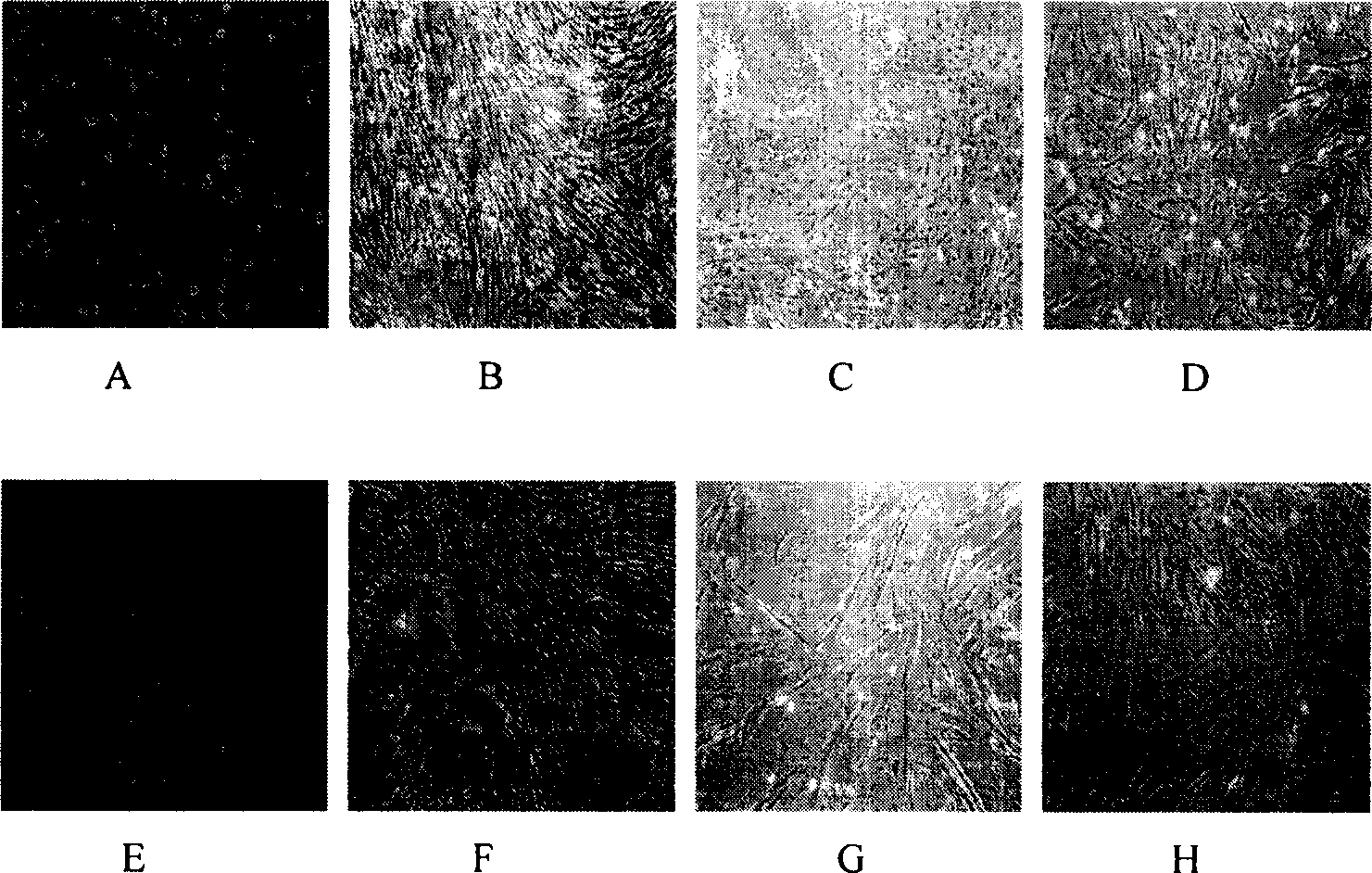Method of inducing differentiation of human amnion mesenchyme stem cell to nerve cell
A technology of mesenchymal stem cells and nerve cells, applied in the field of inducing human amniotic mesenchymal stem cells to differentiate into nerve cells
- Summary
- Abstract
- Description
- Claims
- Application Information
AI Technical Summary
Problems solved by technology
Method used
Image
Examples
Embodiment 1
[0024] 1. Isolation, culture, expansion and purification of human amniotic membrane mesenchymal stem cells
[0025] 1. Isolation of human amniotic membrane mesenchymal cells:
[0026] Under aseptic conditions, take the human placenta of a normal term cesarean section fetus, bluntly separate the amniotic membrane from the umbilical cord of the placenta, rinse thoroughly with phosphate buffered saline (PBS), and cut the amniotic membrane into 1.0cm×1.0cm sheets, Add 2ml of 0.25% trypsin to each gram of tissue, digest it for 30 minutes at room temperature for 3 times, then stop trypsin with DMEM / F12 culture medium containing 10% fetal bovine serum (FBS) by volume. To remove epithelial cells as much as possible. Then cut the amniotic membrane as much as possible, and add V containing 1.0g / L collagenase and 0.10g / L deoxyribonuclease per gram of tissue DMEM : V F12 =1:1 DMEM / F12 culture medium 2ml, digested at 37°C for 60 minutes to obtain a cell suspension. Then filter the digested cel...
Embodiment 2
[0039] Example 2: Application of composition containing HADMSCs in the treatment of neurological diseases
[0040] HADMSCs can differentiate into nerve cells, opening up a new cell source for nerve transplantation. The present invention establishes an animal model to further confirm the above results.
[0041] 1. Animal grouping and model making:
[0042] There are 80 Wistar rats, male or female, randomly divided into 4 groups: Group A is the injury group (Sham), 20 rats, only the craniotomy, but not the brain tissue, and the transplantation of cells, served as the negative control group. Group B was a sham transplant group (TBI+NS), with 20 rats. One day after craniotomy and drilling to strike the brain tissue, 10μl of normal saline was injected as an intervention control. Group C is the transplantation group (TBI+HADMSCs), with 20 rats. One day after craniotomy and drilling to strike the brain tissue, 10μl of normal saline containing HADMSCs was injected as the HADMSCs transplan...
Embodiment 3
[0048] Example 3: Application of fibrin glue as a scaffold material of HADMSCs in tissue engineering
[0049] Fibrin glue is a medical biomaterial made by extracting related components such as fibrinogen, factor XIII, thrombin, etc. from the blood. It can be used as an adhesive to bond and repair tissue damage. It has good histocompatibility and biodegradability. Can be completely absorbed by the tissue. We mixed fibrin glue and HADMSCs and transplanted them into the injured brain tissue of rats. We found that they differentiated into neurons and glial cells at 2 and 4 weeks, indicating that the transplanted HADMSCs can be very good in fibrin glue. Survival, and under the influence of local microenvironment, can differentiate into nerve cells. There was no infiltration of inflammatory cells in the transplanted area, indicating good compatibility with brain tissue. No fibrin glue clumps were found in the tissue HE slices of 2 weeks, indicating that the fibrin glue has been complete...
PUM
 Login to View More
Login to View More Abstract
Description
Claims
Application Information
 Login to View More
Login to View More - Generate Ideas
- Intellectual Property
- Life Sciences
- Materials
- Tech Scout
- Unparalleled Data Quality
- Higher Quality Content
- 60% Fewer Hallucinations
Browse by: Latest US Patents, China's latest patents, Technical Efficacy Thesaurus, Application Domain, Technology Topic, Popular Technical Reports.
© 2025 PatSnap. All rights reserved.Legal|Privacy policy|Modern Slavery Act Transparency Statement|Sitemap|About US| Contact US: help@patsnap.com



